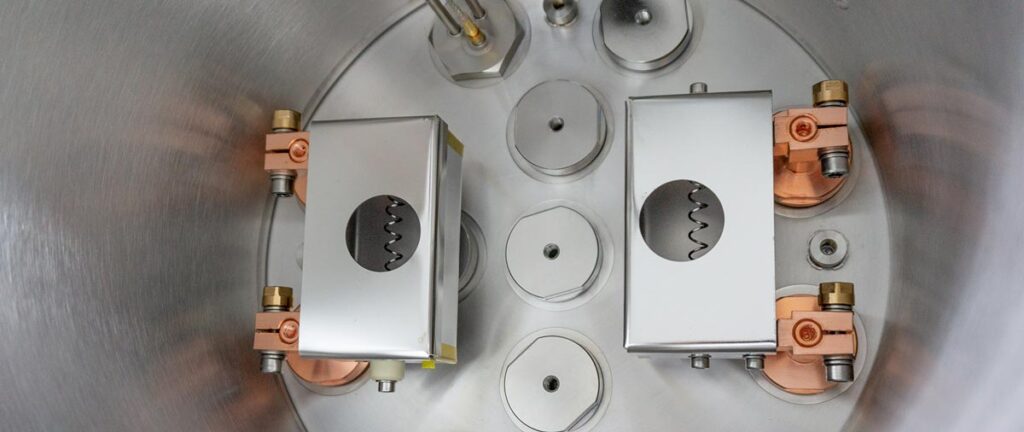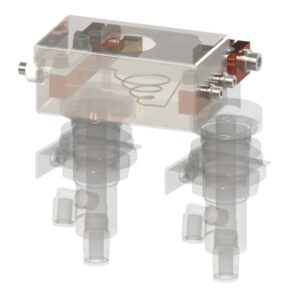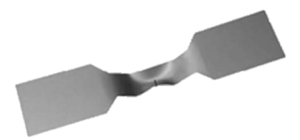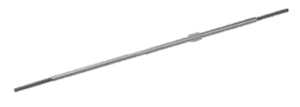
Introduction thermal evaporation
A thermal evaporation (TE) component typically consists of power supply rods, usually fashioned from thick copper, mounted to feedthroughs that allow transmission of current from an air-side power supply network through to a high-vacuum process chamber.
Clamped between the power legs is a resistive support on which the material to be evaporated (the evaporant) is placed—this is commonly referred to as the source. Figure 1 shows a Moorfield type TE1 assembly. The source has box-type shielding for improved efficiency and restricting emission of IR and deposition material in unwanted directions.

Figure 1: Moorfield TE1 thermal evaporation component with box-shielding (translucent here for showing internal parts). The copper power legs can be seen mounted to water-cooled feedthroughs (bottom). The source supporting the evaporant is clamped between the power legs.
During operation, electrical current passes through the supply rods and into the source. The electrical properties of the source allow for resistive heating to high temperatures (depending on the source type), which, in turn, heats the supported evaporant. Under these conditions, the evaporant will melt and evaporate (or sublime) releasing vapor that moves up through the chamber vacuum to coat a substrate.
Types of thermal evaporation sources
Thermal evaporation is suitable for depositing a wide range of materials. To a large extend, the capability of the technique is subject to the type of source fitted. Sources are typically fabricated from tungsten, tantalum or molybdenum, and come in several different forms, e.g. boats, baskets (including those suitable for supporting crucibles), filaments and coated rods. Some of these are showed in Figure 2, and described below.
Boats

These are a common choice and come in a variety of sizes. In general, for the same evaporant, larger boats require higher powers for the same deposition rate and allow for greater maximum deposition rates.
Alumina coated boats
Can be used for evaporants that exhibit high adhesion to source materials, providing a surface that resists wetting. It should be noted however that these boats require a higher current to achieve similar temperatures. This type is often preferred for valuable materials.
Baskets

Are ideal if the user is less concerned with material losses versus using a boat. Baskets also allow for higher deposition rates with the same current due to generally high source voltages. Material is emitted in all directions from a basket; box shielding can be used to contain stray deposition. Baskets can be fitted with crucibles, often used for precious metals (restricts wastage) or where a large volume of evaporant needs to be supported.
Rods

Are useful in situations where thermal evaporation is not possible using the forms detailed above, due to high evaporation temperatures that would require very-high currents for boat/basket sources not available using standard power supplies. For example, for chromium, it is common to use Cr-coated rods that allow for high temperatures using relatively low currents.
Learn More?
Please click on ‘Request Application Note’ and we will send you the full application note: ‘Source selection for thermal evaporation’.
